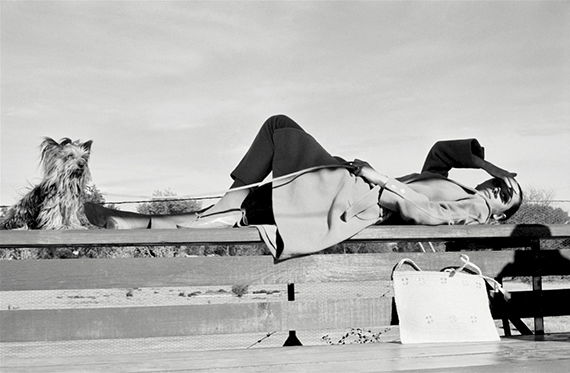
© Inge Morath / Magnum Photos / courtesy CLAIRbyKahn
Inge Morath »
INGE MORATH HOMMAGE
Exhibition: 21 Dec 2022 – 1 May 2023
Thu 9 Mar
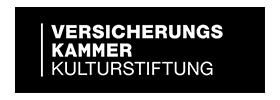
Kunstfoyer
Thierschplatz 6
80538 München
+49 (0)89-2160 2244
kunstfoyer@vkb.de
www.versicherungskammer-kulturstiftung.de
Mon, Tue, Thu 10-18, Fri 10-20; Sat, Sun 10-18
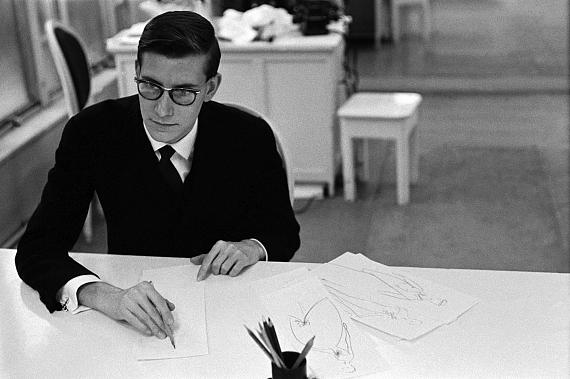
© Inge Morath / Magnum Photos / courtesy CLAIRbyKahn
Inge Morath
"Homage"
Exhibition: 21 December 2022 – 1 May 2023
Versicherungskammer Kulturstiftung's Kunstfoyer is showing "INGE MORATH HOMAGE" to mark the 100th birthday of the famous Magnum photographer in collaboration with the Inge Morath Estate, curated by Anna-Patricia Kahn and Isabel Siben.
Inge Morath (1923–2002) was born in Graz, Austria. Her parents were scientists whose work took them to different laboratories and universities in Europe during her childhood. Educated in French-speaking schools, Morath and her family relocated to Darmstadt in the 1930s, and then to Berlin.
Morath’s first encounter with avant-garde art was at the Entartete Kunst ("Degenerate Art") exhibition organized by the Nazi party in 1937, which sought to inflame public opinion against modern art. "I found a number of these paintings exciting and fell in love with Franz Marc’s Blue Horse," Morath later wrote. "Only negative comments were allowed, and thus began a long period of keeping silent and concealing thoughts."
After the Second World War, Morath worked as a translator and journalist. In 1948, she was hired by Warren Trabant for Heute, an illustrated magazine published by the US Information Agency in Munich. Morath had encountered photographer Ernst Haas in Vienna and brought his work to Trabant’s attention. Working together for Heute, Morath wrote articles to accompany Haas’ pictures. In 1949, Morath and Haas were invited by Robert Capa to join the newly-founded Magnum Photos in Paris, where she would work as an editor. Working with contact sheets by founding member Henri Cartier-Bresson fascinated Morath. She wrote, "I think that in studying his way of photographing I learned how to photograph myself before I ever took a camera into my hand."
Morath was briefly married to the British journalist Lionel Birch and relocated to London in 1951. That same year, she began to photograph during a visit to Venice. "It was instantly clear to me that from now on I would be a photographer," she wrote. "As I continued to photograph I became quite joyous. I knew that I could express the things I wanted to say by giving them form through my eyes." Morath divorced Birch and returned to Paris to pursue a career in photography.
In 1955 she was invited to become a full member of Magnum Photos. During the late 1950s, she travelled widely, covering stories in Europe, the Middle East, Africa, the United States, and South America for such publications as Holiday, Paris Match, and Vogue. She published Guerre à la Tristesse, photographs of Spain, with Robert Delpire in 1955, followed by De la Perse à l’Iran, photographs of Iran, in 1958.
Like many Magnum members, Morath worked as a still photographer on numerous motion picture sets. Having met director John Huston while she was living in London, Morath worked on several of his films. In 1960 she was on the set of The Misfits, a blockbuster film featuring Marilyn Monroe, Clark Gable, and Montgomery Clift, with a screenplay by Arthur Miller. Morath met Miller while working on The Misfits, and—following Miller’s divorce from Monroe—they were married on February 17, 1962.
Morath’s achievements during her first decade of work as a photographer are significant. Along with Eve Arnold, she was among the first women members of Magnum Photos, which remains to this day a predominantly male organization. Many critics have written of the element of playful surrealism that characterizes Morath’s work from this period. It was motivated by a fundamental humanism, shaped as much by the experience of war as by its lingering shadow over post-war Europe. This motivation grows, in Morath’s mature work, into a motif as she documents the endurance of the human spirit under situations of extreme duress as well as its manifestations of ecstasy and joy.
Ingeborg Morath Miller died of cancer in 2002, at the age of 78. In honour of their colleague, the members of Magnum Photos established the Inge Morath Award in 2002. The Award is administered by the Inge Morath Foundation in cooperation with the Magnum Foundation, New York. The Inge Morath archive was acquired by the Beinecke Library at Yale University in 2014, and the material is open for research.
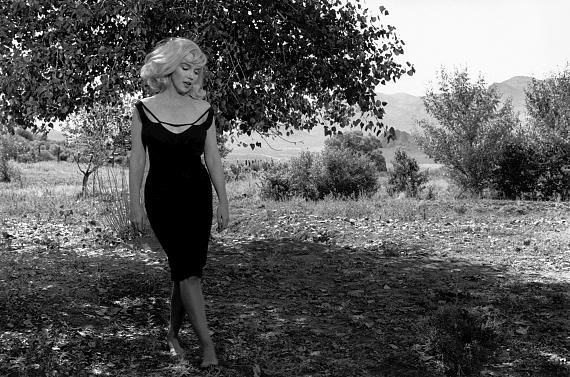
© Inge Morath / Magnum Photos / courtesy CLAIRbyKahn
Inge Morath
"Homage"
Ausstellung: 21. Dezember 2022 bis 1. Mai 2023
Das Kunstfoyer der Versicherungskammer Kulturstiftung zeigt "INGE MORATH HOMAGE" zum 100. Geburtstag der berühmten Magnum-Fotografin in Zusammenarbeit mit dem Inge Morath Estate, kuratiert von Anna-Patricia Kahn und Isabel Siben.
Inge Morath (1923–2002) wurde in Graz geboren. Die Eltern waren Naturwissenschaftler, ihre Berufstätigkeit führte sie, als Inge ein kleines Kind war, an unterschiedliche Labore und Universitäten in Europa. Inge Morath ging auf französische Schulen, in den 1930er Jahren zog die Familie nach Darmstadt und dann nach Berlin.
Moraths erste Begegnung mit moderner Malerei war die von den Nationalsozialisten organisierte Ausstellung Entartete Kunst im Jahr 1937, die die öffentliche Meinung gegen moderne Kunst aufbringen sollte. "Ich fand einige dieser Gemälde aufregend und verliebte mich in Franz Marcs Blaues Pferd", schrieb Inge Morath später. "Nur negative Kommentare wurden gebilligt, und so begann die lange Periode des Schweigens und Verschweigens."
Nach dem Zweiten Weltkrieg war Morath als Übersetzerin und Journalistin tätig. 1948 wurde sie von Warren Trabant für Heute engagiert, eine von der US Information Agency in München herausgegebene Illustrierte. Morath hatte in Wien Ernst Haas kennengelernt und machte Trabant auf ihn aufmerksam. Die beiden arbeiteten fortan gemeinsam für Heute, Morath schrieb Artikel zu den Bildern von Haas. 1949 wurden Morath und Haas von Robert Capa eingeladen, für die neu gegründete Agentur Magnum Photos zu arbeiten. Morath war zunächst als Redakteurin tätig. Die Arbeit mit den Kontaktbögen des Gründungsmitglieds Henri Cartier-Bresson faszinierte sie: "Ich glaube, ich habe beim Studium der Art, wie er photographierte, selbst photogra- phieren gelernt, ohne je eine Kamera in die Hand genommen zu haben."
Morath war kurz mit dem britischen Journalisten Lionel Birch verheiratet und zog 1951 nach London. Im selben Jahr begann sie auf einer Venedig-Reise zu photographieren. "Es war mir sofort klar, dass ich von nun an Photographin sein würde; ich photographierte weiter und war mir freudig bewusst, dass ich nun dem, was ich zu sagen hatte, durch meine Augen Form geben konnte." Morath ließ sich von Birch scheiden und kehrte nach Paris zurück, um die Photographie zum Beruf zu machen.
1955 wurde sie eingeladen, Vollmitglied bei Magnum Photos zu werden. In den späten 1950er Jahren reiste sie viel, berichtete aus Europa, dem Nahen Osten, Afrika, den USA und Südamerika für Zeitschriften wie Holiday, Paris Match und Vogue. 1955 veröffentlichte sie, zusammen mit Robert Delpire, ihr erstes Buch, Guerre à la Tristesse mit Photographien aus Spanien, 1958 folgte De la Perse à l’Iran mit Photographien aus dem Iran.
Wie viele Magnum-Mitglieder arbeitete Morath als Still-Photographin an zahlreichen Filmsets. In ihrer Londoner Zeit hatte sie John Houston kennengelernt und arbeitete bei mehreren seiner Filme mit. 1960 war sie am Set von The Misfits, einem Blockbuster mit Marilyn Monroe, Clark Gable und Montgomery Clift, nach einem Drehbuch von Arthur Miller. Morath lernte Miller bei den Dreharbeiten von The Misfits kennen, sie heirateten – nach Millers Scheidung von Monroe – am 17. Februar 1962.
Morath hat bereits in den ersten zehn Jahren ihrer Tätigkeit als Photographin viel erreicht. Mit Eve Arnold gehörte sie zu den ersten weiblichen Mitgliedern von Magnum Photos, einer bis heute von Männern dominierten Organisation. In der Presse wurde viel über das spielerisch-surrealistische Element geschrieben, das Moraths Werk aus dieser Zeit charakterisiert. Es war durch einen fundamentalen Humanismus motiviert und von der Erfahrung des Krieges und dessen anhaltendem Schatten über Nachkriegseuropa geprägt. Diese Motivation wächst im reifen Werk zu einem Motiv heran, wenn Morath die Widerstandskraft des menschlichen Geistes in extremen Zwangslagen dokumentiert, aber auch seine Manifestationen in Ekstase und Freude.
Ingeborg Morath Miller starb 2002, mit 78 Jahren, an Krebs. Zu Ehren ihrer Kollegin gründeten die Mitglieder von Magnum Photo noch im selben Jahr den Inge Morath Award, er wird von der Inge Morath Foundation in Kooperation mit der Magnum Foundation, New York, verwaltet. Das Inge Morath-Archiv wurde im Jahr 2014 von der Beinecke Library at Yale University erworben und ist für Forschungszwecke zugänglich.
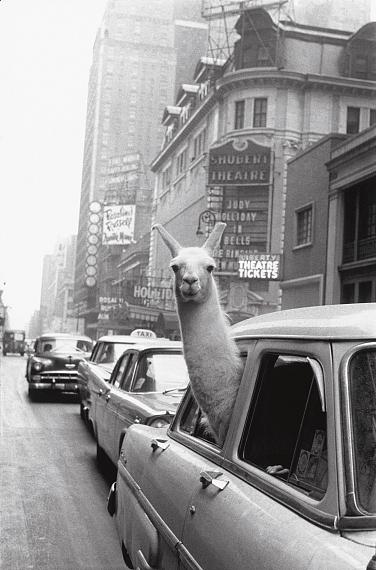
© Inge Morath / Magnum Photos / courtesy CLAIRbyKahn
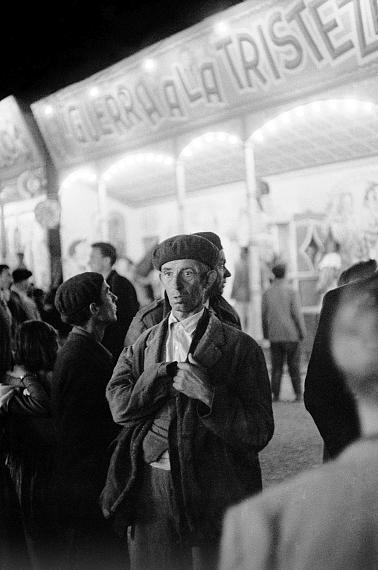
© Inge Morath / Magnum Photos / courtesy CLAIRbyKahn